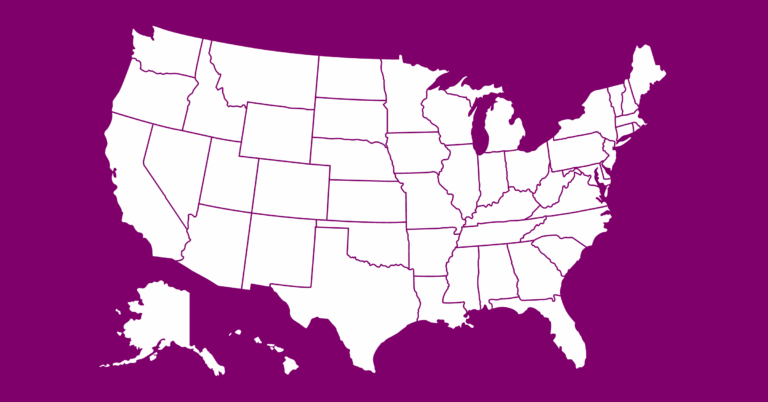Real world connected and flexible learning experiences have tremendous potential to personalize learning for K-12 students – and at KnowledgeWorks, we believe that adopting a personalized, competency-based approach to education is a key step toward empowering these types of experiences to deliver on their true potential. These experiences can include more formal experiences like dual credit, work-based learning and career and technical education (CTE), as well as others such as capstones, community-based experiences or independent study.
Too often, however, students experience these pathways as an “add-on” instead of a core component to the existing education system. Students may struggle to fit them into their schedule and often cannot earn credit towards graduation for them and schools may struggle to create those opportunities. And schools and districts may not have the resources necessary to build programs or scale successful ones.
We’ve seen first-hand how schools that adopt a competency-based approach are empowered to both expand and more deeply integrate these types of flexible learning experiences into the fabric of school operations. Empower[Ed], a program that combines personalized, competency-based learning and college- and career-ready opportunities at Bismarck Public Schools in North Dakota, is an example of how one school is working to make this kind of learning a reality.
How Empower[Ed] expands what’s possible for learning in Bismarck Public Schools
By crosswalking academic content standards with community-based experiences, CTE course-embedded learning, small group seminars and/or individual learner inquiries and passion programs, Empower[Ed] gives students an opportunity to pursue core academic content through a combination of personalized learning coursework and experiences outside of the traditional classroom in a way that works best for them.
Empower[Ed] has made it possible for students to undertake truly transformative experiences during their educational journey that likely wouldn’t be possible outside of this program. Students this past year worked to build a living plant wall in the career academy, created campaigns to increase female representation in agricultural pathways and built outdoor obstacle courses for the local YMCA. Empower[Ed] also actively engages with local stakeholders to find opportunities for students, such as bringing in a local construction company to host new experiences.
Students leverage their experiences to complete courses at the high school level in social studies, English, math, physical education and science, as well as demonstrate proficiency in competencies such as speaking and listening. David St. Peter, a teacher who runs the program, shared that students are typically able to leverage their experiences to meet between 5 and 20 percent of their academic content standards, depending on the course in question.
And it’s important to note that these activities aren’t just plug and play opportunities – they truly strive to maintain the educator-learner connection inherent in a personalized learning environment.
While small at present, the program has already achieved some notable results. Students have been able to earn subject area credits from CTE coursework and report that it has increased their perception of their own agency. The program is also slated to expand access to more students in the coming years.

A Community-Wide Vision for Personalized Learning
How state policy makes programs like Empower[Ed] possible
State policy has made it possible for this program to take off. Empower[Ed] leverages a waiver opportunity giving North Dakota schools an opportunity to ask for flexibility from various state statutes that may be hampering innovation. The state’s recently passed Learn Everyone bill also creates a framework to develop more of these types of opportunities for students and to allow students to earn credit for them.
Other states could take several steps to support the development of programs like Empower[Ed].
Provide flexibility for innovative approaches. Without an opportunity for flexibility, Bismarck may never have been able to get Empower[Ed] off the ground. And different states have taken other approaches to offering the same type of flexibility. A recent 50-state scan by the Education Commission of the States found that at least 31 states allow innovation schools or zones, which typically give schools the opportunity to create innovative education programs, while at least 18 states have pilot programs specific to competency-based learning.
Rethink K-12 funding. Schools and districts need financial support to create and scale success. One challenge that staff in Bismarck identified is that as demand for the program grows, the resources aren’t necessarily there to meet that growing demand. This isn’t just money for classes or facilities – resources are also needed for certified staff, student mental health, teacher professional development or community outreach opportunities. States might consider following Utah’s example and create planning grants for competency-based programs.
Modify credit for learning policies. States have a role to play in ensuring that students receive tangible outcomes from participating in these types of opportunities. These outcomes could include college credits, business credentials or even an associate’s degree. However, they could also include credit for graduation at the high school level. North Dakota recently passed SB 2196, which provides a competency framework that can be used as a substitute for the Carnegie Unit as an opportunity to award credit. Further abroad, states could also learn from examples like Montana, which recently expanded the scope of what it considers to be “pupil instruction” to include areas such as work-based and experiential learning.
Schools operating in a competency-based system that prioritizes mastery of higher level skills and dispositions alongside rigorous academic knowledge can truly create and utilize the types of engaging and flexible learning experiences needed to meet each student’s strengths, needs and interests – and when paired with programs like Empower[Ed], we’re able to truly see the ways that competency-based education and college and career pathways prepare students for success in college, career and life.






